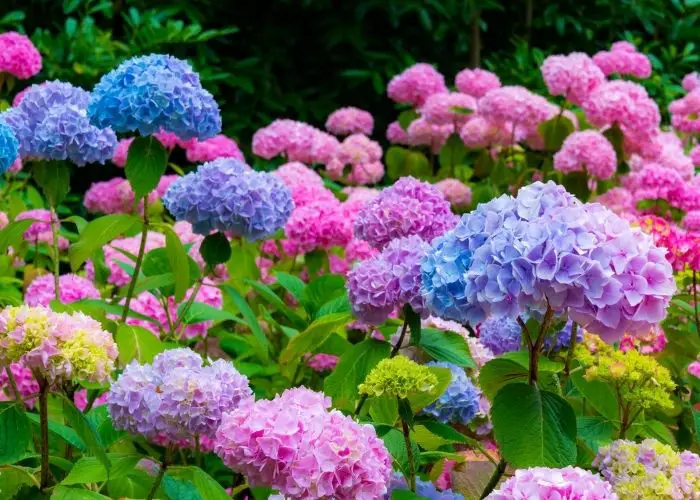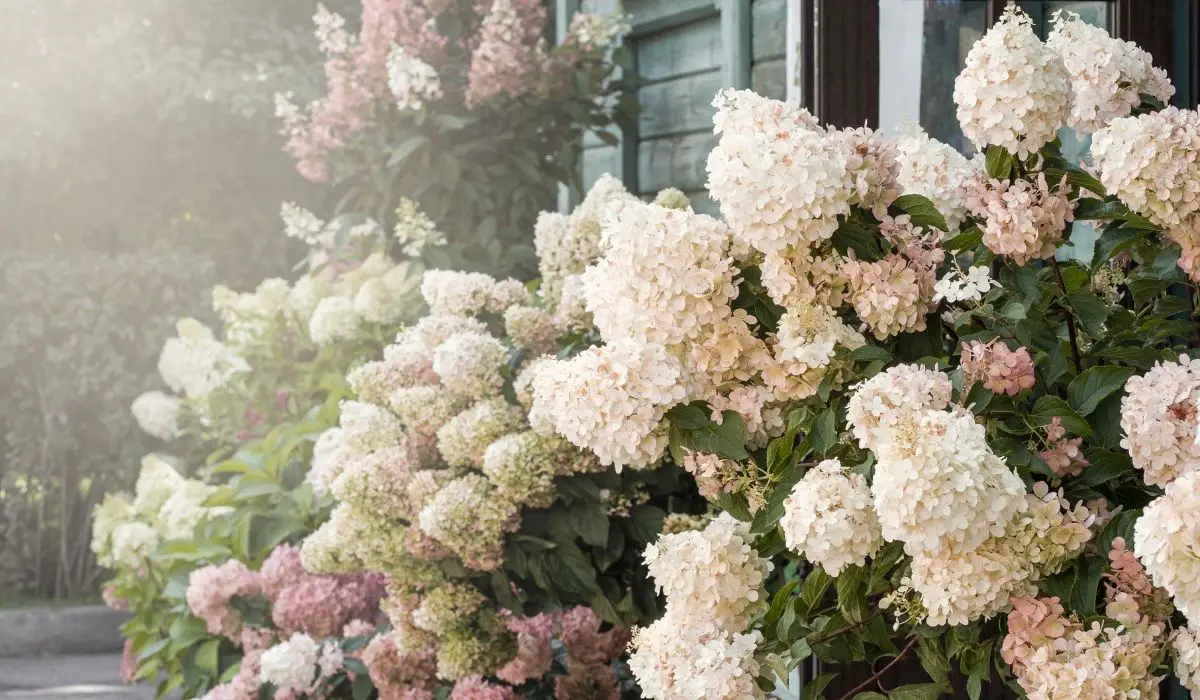The best fertilizer for hydrangeas should be able to provide all the nutrients the plant needs during its growth journey.
Hydrangea hybrids (Hydrangea) are a genus of flowering plants belonging to the family Hydrangeaceae. Hydrangea is an old name that refers to hyacinths, as they were once thought to be related to them.
Contents
All About Hydrangea
Hydrangea hybrids have large, showy flowers with bright colors and are very popular in the garden. The flowers can last up to 5 weeks. They can be grouped into 3 main categories:
- Single Hydrangea Hybrids – the most common type. They produce one large flower on a stem up to 30cm tall and 15cm wide, usually produced in early spring. These are best for use in borders or on a patio. They can be used in pots too.
- Double Hydrangea Hybrids – have 2 flowers on each stem, usually producing a smaller flower that is slightly larger than the single variety. They are great for use in the garden.
- Tri-Hydrangea Hybrids – have 3 flowers on a stem. They produce a much smaller flower that is similar to a single flower.
The flowers of hydrangeas have an opening at the base, which has a tube shape. The tube is made up of a series of overlapping scales called “teeth”. The top of the tube is covered in a white or pinkish petal called the “hood”. This hood covers the inner part of the tube where the pollen and nectar are stored. The part that is exposed to the air is called the “throat”. Hydrangea hybrids grow from bulbs. There are two main types of bulbs:
- Semi-Dormant Bulbs – these are like a large spring onion, they have a root but no leaves. They grow all year round and need to be brought into the house in the autumn. They will stay dormant until they flower in the spring and have long stems and look like small shrubs.
- Dormant Bulbs – these are also known as winter flowering bulbs, they have left on them, the stem and flower from late autumn to early spring.

Read more about A Guide On How To Grow Onions In Texas
The Best Fertilizer For Hydrangeas
Hydrangeas are easy to grow and require little maintenance. They are also very forgiving, so if you have a spotty watering routine, your hydrangeas will likely not suffer. Here are some best fertilizers for hydrangeas:
- Compost. The soil in which your hydrangeas grow is a vital part of their health. The best way to fertilize your hydrangeas is to add compost to the soil around them. It’s a great source of nitrogen and other nutrients that help plants thrive.
- Organic fertilizer. If you want to use organic fertilizer, apply it directly to the soil around your hydrangeas. Look for a product that contains both nitrogen and phosphorus.
- Commercial fertilizer. This is probably not the best option for most gardeners. Commercial fertilizer often contains chemicals that can harm your plants.
What Should The Best Fertilizer For Hydrangeas Contain?
The best fertilizer for hydrangeas should have a an adequate nitrogen content. This is to give them more color, size and can make them more resistant to diseases. We recommend you start with low nitrogen fertilizer, such as 10-10-10 or 12-12-12. . A good rule of thumb is to add 1/2 teaspoon of fertilizer per gallon of water. If you are unsure how much fertilizer to add, you can always test a small area of your hydrangea to see if it needs additional nutrients. Hydrangeas need to be fertilized once every two weeks during the growing season.
Caring For Your Hydrangeas
Hydrangeas require a good amount of care that you should provide to have them thrive. The care includes:
- Watering. Keep their soil moist and never let the water level drop below 1 inch. This will ensure that your hydrangeas get enough water and do not suffer from drought conditions.
- Fertilizing. You should fertilize your hydrangeas every 4 weeks. Be sure to add fertilizer in the form of liquid or fertilizer pellets. It is recommended that you use a half-strength fertilizer to begin with, then increase the strength as you see your hydrangea need it.
- Pruning. Pruning your hydrangeas is essential for a healthy, beautiful plant. Prune them once a year after they flower. They can be pruned back by half or up to one third. You can also prune the stems to control the size of the plants.
- Deadheading. Deadheading hydrangeas will help prevent diseases and insects. It will also ensure that your plants get enough nutrients and water. Deadhead them after the blooms fade away. If the flowers are gone, it’s time to deadhead your hydrangeas.
Summary
We hope that this article has helped you with identifying the best fertilizer for hydrangeas and caring for your plant. If you have any other questions or concerns about hydrangeas, please let us know. We’re happy to help!
Read more about How Deep Should A Raised Garden Bed Be
Frequently Asked Questions
What is the best time to fertilize hydrangeas?
Hydrangeas are usually fertilized when they are actively growing in spring and summer, as long as the weather is warm. It is best to fertilize them after the first flowers open. You can fertilize them again after the blooms have set or fallen.
What is a natural fertilizer for hydrangeas?
Hydrangeas need regular feeding to keep them looking healthy. The most effective natural fertilizer for hydrangeas is a high-quality liquid feed. This can be applied by spraying the foliage or by pouring the liquid into the soil.
Is Epsom salt good for hydrangeas?
Epsom salt is a natural mineral that is rich in magnesium and potassium, which are both vital for healthy growth. The magnesium and potassium help to keep the leaves hydrated and prevent wilting. It can be used as a foliar feed or drench applied through the drip irrigation system.
Is Miracle Grow good for hydrangeas?
Miracle Grow is a well-known, high-quality garden and lawn care product. We’ve been helping gardeners since 1935, and our customers know that we are committed to providing them with the highest quality products and services available. When it comes to Miracle Grow, we take the quality of our products very seriously.
Why are my hydrangeas not blooming?
Hydrangeas require a lot of water. In order to bloom, they need a minimum of four inches of water every week. If you have ever tried to water your hydrangea and it just won’t take, then it’s time to call us. We can be there in no time to help.
A garden is a place that relaxes us and reflects our personal style, it’s a place to spend time with loved ones and grow our own fruits and vegetables. Maybe you’re looking for design inspiration or plant selection, or you’re concerned about garden privacy, shady areas, or pests, but don’t worry, you’ve come to the right place.

